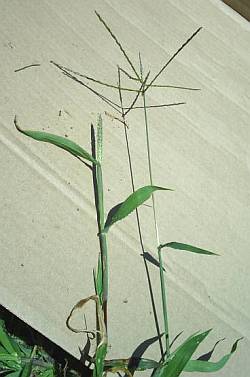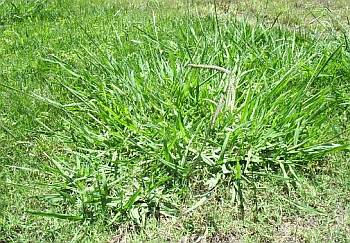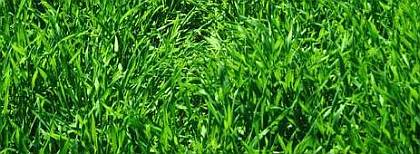GETTING RID OF CRABGRASS
Does everyone hate and need help getting rid of crab grass? No!
Believe it or not, there are three categories of people who actually want this troublesome weed. Read this article if you are NOT one of them.
Folks fond of the tenacious spirit of crabgrass are:
- Farmers growing summer forage crops for cattle.
- Environmental agencies cleaning up oil spills.
- Homeowners who wouldn’t have anything green in their yard if it wasn’t for crabgrass!
So now that we know crab grass isn’t everyone's nemesis, do you need ideas for keeping it out of your lawn or yard?
Weed problems don’t happen overnight, though you might swear they do.
Getting rid of crab grass won’t occur quickly either.
But it is possible to eliminate now and prevent or lessen its reappearance each year.
FTC Disclosure:
If you make a purchase via a link on this site, I may receive a small commission on the transaction - at no added cost to you.
Sponsored Links
WHY IS CRABGRASS SUCH A NUISANCE?
Crab grass is an annual weed, but it acts like a perennial. It has what is called an indeterminate growth pattern. Most annual weeds grow until mature enough to produce seeds, then they die. They have one shot to reproduce.
Getting rid of crab grass is difficult because it keeps growing all season, spring through fall. New plant growth, developing seed heads, and mature seeds will all be present on a plant throughout the warm seasons.
Mowing the crabgrass won’t stop it, or even slow it down. It will grow more flat, rather than upright. But it keeps producing seeds, week after week, until you kill it or cold weather arrives.

Crab grass is prolific. It can produce over 150,000 seeds per plant. Most of these seeds won’t germinate till the next season, but it may seem like new plants are popping up from the current seeds.
Actually, this just reflects the long window in which crabgrass will start to grow, depending on the seed's position and various growing conditions. Any attempt at getting rid of crab grass has to take this into account.
Seed germination depends on certain soil temperatures, anywhere from 50 to 75 degrees. When this point occurs will vary in different parts of your yard. It is affected by sun exposure, shading, moisture content, and more. I’ll explain later how this can be used to your advantage.
The one thing to realize from this is that the longer you wait in the season to kill crabgrass, the worse your problem will be next year. If you do nothing during the growing season, plan during the winter for an early start to your battle for control. But even if this weed has the upper hand now, don't give up!
HELPFUL TIP:
If you are not certain that crabgrass is the demon you face,
take a moment to find out, in this article
What Does Crabgrass Look Like.
Also, take a look at a series of useful crabgrass photos
in this gallery of Crabgrass Pictures.
STEPS TO GETTING RID OF CRAB GRASS
Once this troublesome weed has gotten started in your yard, there are several things you can do to get control over it. The step or stage that is best for starting will depend on the season in which you begin.
(The explanation for each of these steps follows below.
- Keep crabgrass seeds from spreading.
- Kill existing crabgrass.
- Remove dead crabgrass plants.
- Replant bare lawn spots with new grass seed.
- Apply a crabgrass preventer at the appropriate times.
- Set your lawnmower at the high end of the range that is best for your grass type.
- Restrict excess fertilizing or too-frequent watering.
- Keep your lawn healthy as the most conducive way to get rid of crabgrass.
1. CRABGRASS CONTROL THROUGH
SEED CONTROL
During the warm months, getting rid of crab grass problems in the future should be your goal. Try to prevent the formation and spread of crabgrass seeds.Before mowing, use a lawn rake to disturb the crabgrass from its prostrate position.

Like running a comb through your hair the wrong way, use the rake to cause the seed branches to stand up above the grass.
This might be a tedious chore, but can eliminate 2 or 3 times as many seed heads as a regular mowing over hidden stalks.
After raking, mow the lawn as soon as possible. Be sure to use a grass catcher. Normally, a mulching mower that returns clippings to the soil is a good idea. That won’t help when your goal is getting rid of crab grass seeds.
Can you put these clippings, with seeds, into a compost pile? Only if you actively work the pile, turning it regularly to generate enough heat to kill the seeds. If you add to your garden beds any compost with the seeds not killed, guess what? Crabgrass seeds can remain alive for years in the soil, and germinate even at depths of 2” - 3”.
Your best bet at this time may be to recycle your clippings through the local yard waste collection. This is not a technique to pursue long term. Just utilize this practice at the beginning of your “crabgrass war”, until you have killed or removed the weeds.
2. HOW TO KILL CRAB GRASS
The method of choice for getting rid of crab grass that is currently growing will depend on several factors.
Is it a lawn area, flower beds or vegetable garden?
How large is the affected area?
Is conserving time, energy or money most important?
What tools, equipment or products are available to you?
A complete analysis of these concerns will help you determine the best approach. Read this article, How To Kill Crab Grass.
3. REMOVE DEAD CRABGRASS PLANTS
Getting rid of crab grass plants after they die is just as important as killing the weed. The dense mat formed by crabgrass can smother nearby grass plants.
Removing the dead plant in a timely manner may allow your lawn grass to recover.
Crab grass is a type of plant that has an allelopathic effect. This means it releases a toxin that suppresses the growth of other plants.
How long does this effect last after the crabgrass is dead? That is unclear, but the prudent action would be to eliminate any negative effect on your desired plants.
4. REPLANT BARE LAWN SPOTS
When soil is exposed in your lawn area, all types of weed seeds are likely to germinate and take hold. Plan to reseed these open areas in your lawn as soon as possible to eliminate opportunity for more trouble next season.
Early in the fall season is a great time to start new grass. It should have plenty of time to get established before winter.
The spring season is NOT a good time to reseed grass IF you plan to use a preemergent as a crabgrass preventer.
Cover non-lawn areas with a thick layer of mulch to reduce the likelihood of weeds growing. At least one inch thick will help, but two inches is better. Any weeds that still sprout through this will be very easy to eliminate by pulling or spraying.
A series of articles is available to assist you with planting grass seed.
5. CRABGRASS PREVENTION
You’ve embarked on the lengthy journey of getting rid of crab grass. The most important part of your success comes with preventing the next infestation.
The easiest way to do this is by using a preemergent. This is simply a product that will inhibit the crabgrass seedling as it starts to grow. Both chemical and natural products are available.
Timing is always important with pre-emergents, but crabgrass is a bit different from most common weeds. The generic advice you may hear may need to be tailored to fit your situation. Learn some useful facts in this article, When To Apply Crabgrass Preventer
6, 7, 8. BEST LAWN MAINTENANCE PRACTICES
A healthy lawn growing on healthy soil does an exceptional job of resisting a crabgrass infestation. The time, effort and expense of getting rid of crab grass could instead be put into building a resistant lawn environment.
When cutting your lawn, don’t mow too low! Taller grass will shade the soil and make it less hospitable for many weed seeds to develop. Most grasses do well at a mowing height of 2” to 3”, and some varieties even higher.
Crabgrass responds favorably to nitrogen applications. Meaning, if you are growing for cattle forage, throw the fertilizer on. But restrict fertilizer applications on the typical home lawn when your goal is getting rid of crab grass.
Find some valuable guidelines in a series of articles on Fertilizers.
Abundant moisture makes a prime germination setting for weeds.
Avoid daily watering of lawns that keeps the soil constantly moist on top. Deep irrigation done less frequently will promote deeper roots, healthier grass, and fewer weeds.
Do you currently employ a lawn service company?
Ask if they rinse/blow off their mower at previous job sites. You don’t want them bringing weed seeds from a problem lawn.
(Make them answer the question, not sidestep it by saying, "Oh, none of our customers have crabgrass!" To that you may respond, "Oh, and what about their neighbors?")
If you are considering bringing on some professional help, for a project like this or regular maintenance, get more tips like this and be completely informed. You deserve to get the full value from your expenditure.
As this lawn care site develops, you will discover all you need to build, renovate, or maintain a healthy lawn.
And yet for some of you, a time comes when you may want to ask for professional help... (or move to an apartment?)
Dig into these two FREE GUIDES for smart tips on lawn care help,
if you think it may be time to call in the cavalry:
Which Lawn Care Services Might Be Right For You?
What To Expect, and Demand, from Lawn Care Companies
Sponsored Links:

BRING ON SPRING!
A Stronger, Greener Lawn
Starts Now...
with help from DoMyOwn
Products * Videos * Schedules * Guides
